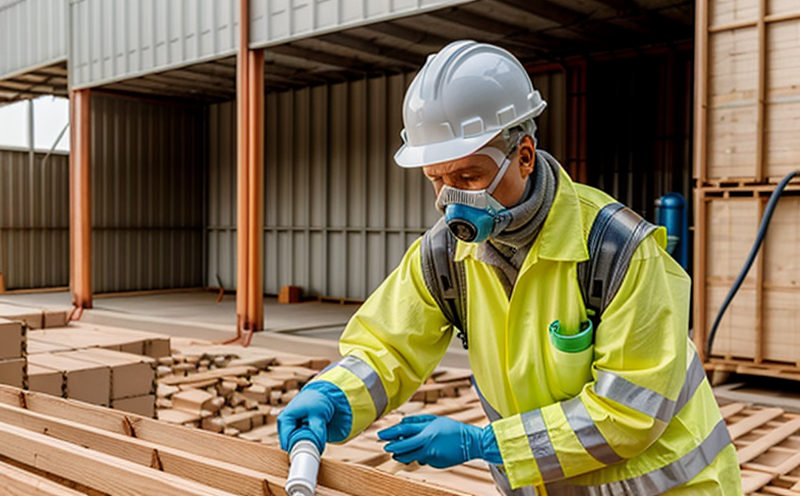Evaluating the potential health risks posed by VOCs emitted from chemicals and materials
The Hidden Dangers of VOCs How Eurolabs Expertise Can Protect Your Business and Your Employees
In todays fast-paced business world, companies are constantly seeking ways to improve efficiency, productivity, and safety in the workplace. One often-overlooked aspect of maintaining a healthy work environment is the presence of volatile organic compounds (VOCs), which can have serious implications for both employees health and the companys bottom line.
What are VOCs?
VOCs are chemicals that evaporate easily at room temperature, releasing gases into the air. They are commonly found in products such as paints, adhesives, cleaning supplies, and building materials. While some VOCs may have a pleasant smell or be used for specific purposes, many others can cause a range of health issues, from mild irritation to life-threatening conditions.
The Dangers of VOC Exposure
Exposure to high levels of VOCs has been linked to various health problems, including
Respiratory issues such as asthma, bronchitis, and lung cancer
Neurological effects headaches, dizziness, nausea, and cognitive impairment
Cancer risks certain VOCs have been classified as carcinogens by regulatory agencies
Why is Evaluating the Potential Health Risks Posed by VOCs Essential for Businesses?
As a responsible business owner, its crucial to prioritize your employees health and safety. By evaluating the potential health risks posed by VOCs emitted from chemicals and materials, you can
Reduce Liability Identify and mitigate potential hazards, minimizing the risk of lawsuits and financial losses
Improve Employee Health Create a safer work environment, reducing absenteeism, turnover, and related costs
Enhance Productivity Boost employee morale and focus by ensuring they have a healthy and comfortable workspace
Comply with Regulations Stay ahead of regulatory requirements, avoiding fines and penalties associated with non-compliance
The Benefits of Working with Eurolab
At Eurolab, our team of experts provides comprehensive laboratory services to help you evaluate the potential health risks posed by VOCs emitted from chemicals and materials. Our services include
VOC Analysis Accurate identification and quantification of VOC emissions
Material Testing Evaluation of materials for VOC release rates and emission profiles
Risk Assessment Comprehensive analysis of potential health hazards and development of mitigation strategies
Why Choose Eurolab?
Our laboratory services are designed to provide you with
Accuracy and Reliability State-of-the-art equipment and experienced analysts ensure precise results
Comprehensive Reporting Clear, detailed reports outlining VOC emissions, risks, and recommendations for improvement
Expert Consultation Our team of specialists provides guidance on implementing mitigation strategies and improving workplace safety
Frequently Asked Questions
Q What types of products or materials are most likely to emit VOCs?
A Common sources of VOC emissions include paints, adhesives, cleaning supplies, building materials, and personal care products.
Q How can I determine if my workplace is at risk for VOC exposure?
A Conduct a thorough assessment of your work environment, including the use of VOC-emitting products and materials.
Q What are some common health issues associated with VOC exposure?
A Respiratory problems, neurological effects, and cancer risks have all been linked to VOC exposure.
Q How can I reduce VOC emissions in my workplace?
A Implementing mitigation strategies such as improving ventilation, using low-VOC products, and encouraging employee hygiene practices can help minimize VOC emissions.
-
Testing the emission of volatile organic compounds (VOCs) from chemicals or materials
-
Measuring VOC concentration in chemicals to ensure compliance with environmental regulations
-
Assessing the VOC release rates of solvents, coatings, and adhesives
-
Determining the environmental impact of VOC emissions from chemicals used in manufacturing
-
Simulating real-world conditions to measure VOC emissions during product use or storage
-
Testing for the presence of specific VOCs such as benzene, toluene, and formaldehyde in chemicals
-
Assessing the reduction of VOC emissions through formulation changes or new chemical additives
-
Testing the impact of temperature and humidity on VOC release from chemicals
-
Determining the VOC content in consumer products, coatings, and paints
-
Ensuring that chemical products meet national and international VOC regulations for emissions
-
Testing how VOCs in chemicals contribute to indoor air pollution and their potential for toxicity
-
Evaluating the volatility of chemicals under different environmental conditions, such as high heat or direct sunlight
-
Measuring the impact of VOCs on air quality in confined spaces like factories and warehouses
-
Analyzing the effect of packaging materials on the emission of VOCs from chemicals
-
Testing the impact of VOC exposure on human health and safety in both industrial and commercial environments
-
Determining the compliance of chemicals with EPA and other regulatory standards for VOC emissions
-
Testing chemicals for VOC emissions using chamber methods, direct reading instruments, or laboratory analysis
-
Simulating VOC exposure scenarios to measure air quality levels and determine safe limits for chemicals
-
Testing chemicals in different forms (solid, liquid, gas) to assess VOC emissions at various stages of production and use
-
Evaluating the potential for VOC emissions to react with other materials, creating hazardous byproducts
-
Testing the efficiency of VOC removal systems, such as filters and scrubbers, used in industrial applications




